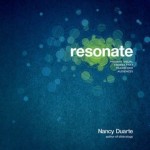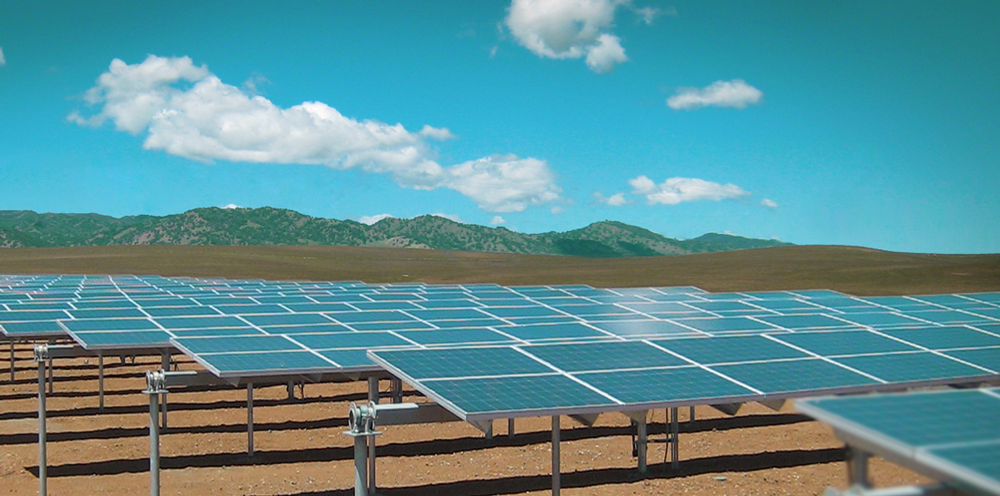1. Make It A Story
People are hardwired to remember stories better than a stack of raw data. They pay attention to stories. They emotionally engage with stories. They retell stories. As a result, you should frame your pitch within a story. Come up with a narrative theme that runs throughout the pitch. Weave the details of your sales pitch into that story.What do I mean by a story? Here’s a very simplistic example:
I once helped the General Manager at a facility like yours. The GM had a problem. He wanted a new [forklift], but the budget is tapped. He needs another [forklift] because it will increase productivity by [20%], which boosts revenue by [$100,000]. The problem is paying for it. The solution: he goes solar. The whole thing is financed upfront. Construction only takes a few weeks. Painless. Once the system is on, his electric bill automatically drops. After a few months, his OpEx surplus grows to $80,000, and he gets his [forklift]. The End.
Main Reason To Use A Story Framework: Retell-ability
You probably think I’m going to say the main benefit of a story framework is the audience pays attention. Wrong. I’m sure you’re already engaging during the meeting. Instead, a story framework solves a much bigger problem. In commercial sales, you typically have to work up a food chain. You pitch to a Manager, then you pitch to a VP, then you pitch to a committee, then they give an opinion to a CEO, and then the CEO and the CFO talk it over. What’s happening internally through all that? Someone else in that company – a non-solar person – is repeating your pitch to see if others want to move forward. Your sale depends on how well that internal champion can repeat your pitch to their boss. If your pitch was just a bunch of numbers, your champion may struggle to remember them. Worse, their boss is struggling to pay attention as he/she hears these facts. Framing your solar pitch as a story solves this problem. If your pitch was framed as a story, then your champion retells that story to the boss. The story is easier for the champion to retell correctly, and the story is easier for the boss to listen to. As this happens, it is easier for the boss to understand the nuanced befits, to follow the numbers, and to feel some emotional engagement. When that happens you’re much closer to closing the deal.The Template For A Story Pitch.
 It took me months to get the story pitch right. (Hint – the example above is nothing close to the version I use.) Fortunately, there is an amazing resource. Check out Resonate: Present Visual Stories that Transform Audiences by Nancy Duarte.
The book breaks down stories into a checklist. I’m not a super creative guy, so this book was exactly what I needed.
A couple interesting tips from Resonate:
* Make your story about a person similar to your customer. (Age, gender, job function, etc)
* Your story should address risks/objections preemptively. For example: “Joe was concerned the construction would disrupt existing customers. Fortunately, we closely coordinated with his plant manager, and in the end no customers complained.”
It took me months to get the story pitch right. (Hint – the example above is nothing close to the version I use.) Fortunately, there is an amazing resource. Check out Resonate: Present Visual Stories that Transform Audiences by Nancy Duarte.
The book breaks down stories into a checklist. I’m not a super creative guy, so this book was exactly what I needed.
A couple interesting tips from Resonate:
* Make your story about a person similar to your customer. (Age, gender, job function, etc)
* Your story should address risks/objections preemptively. For example: “Joe was concerned the construction would disrupt existing customers. Fortunately, we closely coordinated with his plant manager, and in the end no customers complained.”
2. Emphasize The Problem
Lack of urgency is a huge reason for the sales cycle dragging out. Well, let’s think about that. Lack of urgency = customer doesn’t feel like the status quo is a problem. As a sales rep, what did you do to change that? Most solar sales presentations I’ve been in start by mentioning: “You spend $XXX on electricity, and over 20 years that will be $XXXXX.” This is immediately followed by: “Solar is your solution. With Solar you can save $YYY, which over time saves you $YYYYYY.” And from there, the pitch starts talking about financing, equipment, etc. In short – you dedicated all of 1 slide, 2 facts, and maybe 5 minutes to discussing the problem with the status quo. My solution: wallow in the problem. Spend as much time as you can talking about how much they waste on electric bills. Ask questions. Repeat their answers. Make sure they fully grasp how much this electric bill is costing them. Below are a few tips on how you can drag this point out to really drive it home. First, don’t assume they even see it as a problem. Most people look at utility bills as a necessary evil, unchangeable like death and taxes. As a sales rep you know differently. In your eyes, every month they are spending $XXXX for no reason other than they have been too lazy to sign up for a solar PPA/Lease. When framed like that the problem is they are needlessly pouring money down the drain. And not just a little. Over 5-10 years, that’s hundreds of thousands of dollars simply wasted to laziness. Second, make sure the customer sees the problem is “needlessly wasting money.” Below are a few questions that helps frame the problem correctly for your customer:* If you found out your office manager was spending $3,000 extra every month buying the name brand office paper, what would you do?
* What does $3,000 a month mean to this company? Is that a headcount? Is that more marketing? Is that a better performance bonus?
* When you find out a different supplier is charging $3,000 less a month for a commodity, do you switch suppliers or do you overpay out of loyalty?
* If you are pitching a direct purchase, then don’t forget the buy vs rent angle. Why rent electricity when you could own the power plant?
* One that I really like: You have a $250,000 a year electric bill. Who on your team is responsible for managing that cost item? When they say “no one,” you point out: “You have an HR guy. You have a guy buying raw materials. You have a guy managing the facility. Yet, you are letting this line item go on autopilot?”
3. Turn Savings Into Something Tangible
When you go in and say “I can save you $45,000 a year” – people will intellectually understand the point but they won’t emotionally connect with it. $45,000 is an abstract number. In order to drive it home, convert $45,000 into something they want: a new delivery truck, a new hire, an upgraded software service. After that your pitch becomes: “Ok, you want a new tractor. Here’s how we get you that tractor.” Now, your pitch offers a tangible benefit with an emotional connection. Related Tips:* Try to put savings in units they already know well. For example, farmers often lease their land. Changing savings to $1,200 an acre was really effective when $700 per acre was the going rate.
* Emphasize the reinvestment value of savings. For example: If I increased your marketing budget by $3,000 a month, how much does that generate in extra revenue?
* Referencing performance evaluation metrics is effective when talking to CEOs, GMs, COOs. For example: “If you enhance profitability by $36,000 this year, how does that effect your bonus?”
4. Don’t Call It An Investment
Solar pitches often talk in investment terms. Phases like “invest in your business/building” or “solar is a smart investment” are common. Others use investment concepts like IRR and NPV. The problem is most company employees aren’t used to making investments for the business. They make short term operational decisions. Investing is outside their core competency. Again, we’re fighting a slow sales cycle. Another reason people drag their feet with solar is you are asking them to make a decision about something they don’t really understand. I don’t mean the technology. I mean the financial side. They don’t usually make investment decisions. When you come along and ask them to make one, they drag their feet. When you focus on the short term OpEx savings, you keep the decision within their expertise. All managers understand budgets, like:You currently pay $8 but you could pay $6 for the same thing. Would you like to switch and save $2?”My Solution: Keep the pitch focused on the immediate cash flow savings. Resist the urge to bring up fancy concepts like IRR and NPV. When you throw in terms they don’t understand you slow things down. Stick to what they know, and you’ll get a decision more quickly.
5. Hype The Technology
 After selling solar finance for a few years, my mind was blown when I bought a car. I did the whole song and dance with the car salesman. When it came time to talk about the lease financing terms, I was like “yeah, yeah, what is it? Ok, that’s fine.” Wait – what? Everyday, I’m put through the ringer by building
owners asking about every nuanced detail of my PPA or lease terms. Yet, when it’s my turn, I blow it off. What was the difference? I wanted that car! It was a cool car, decent price, and did I mention it was pretty cool!?!
That got me thinking about our solar pitch. Reps are often afraid to hype the technology for two reasons. First, they don’t want to push Panel A because later they may have to swap to Panel B. Second, they think panels are a commodity so there is nothing cool about what they are selling. Unfortunately, the reps are thinking about it wrong.
Solar is still cool. You don’t need to focus on Panel A vs Panel B. Instead focus on: solar panels vs grid power. Focus on: check out this awesome system. We put these black plates up there, this box over here, this app on your phone, and boom …. You have a power plant running off of sunlight. That is amazing. Don’t you think?
Also – solar may be commoditized, but think back to my car analogy. I can get the same Jeep from Dealer A vs Dealer B. Using my solar rep’s logic that means Jeeps are a commodity so they can’t be cool. Wrong. The dealer got me excited about a Jeep. Later, he had to sell me on buying a Jeep from him. But when I raced through the financing discussion to close the deal, it wasn’t because I liked Dealer A. It was because I was pumped to have a Jeep. This same is true about solar.
My point: Don’t skip the “solar is cool” part of your pitch. Show them the panels. Show them the awesome inverter. Explain all the cool things it can do. Pull out the iphone app. Get your customer excited about the solar system itself. That emotional engagement will work like a steam roller when your driving to the close.
After selling solar finance for a few years, my mind was blown when I bought a car. I did the whole song and dance with the car salesman. When it came time to talk about the lease financing terms, I was like “yeah, yeah, what is it? Ok, that’s fine.” Wait – what? Everyday, I’m put through the ringer by building
owners asking about every nuanced detail of my PPA or lease terms. Yet, when it’s my turn, I blow it off. What was the difference? I wanted that car! It was a cool car, decent price, and did I mention it was pretty cool!?!
That got me thinking about our solar pitch. Reps are often afraid to hype the technology for two reasons. First, they don’t want to push Panel A because later they may have to swap to Panel B. Second, they think panels are a commodity so there is nothing cool about what they are selling. Unfortunately, the reps are thinking about it wrong.
Solar is still cool. You don’t need to focus on Panel A vs Panel B. Instead focus on: solar panels vs grid power. Focus on: check out this awesome system. We put these black plates up there, this box over here, this app on your phone, and boom …. You have a power plant running off of sunlight. That is amazing. Don’t you think?
Also – solar may be commoditized, but think back to my car analogy. I can get the same Jeep from Dealer A vs Dealer B. Using my solar rep’s logic that means Jeeps are a commodity so they can’t be cool. Wrong. The dealer got me excited about a Jeep. Later, he had to sell me on buying a Jeep from him. But when I raced through the financing discussion to close the deal, it wasn’t because I liked Dealer A. It was because I was pumped to have a Jeep. This same is true about solar.
My point: Don’t skip the “solar is cool” part of your pitch. Show them the panels. Show them the awesome inverter. Explain all the cool things it can do. Pull out the iphone app. Get your customer excited about the solar system itself. That emotional engagement will work like a steam roller when your driving to the close.


